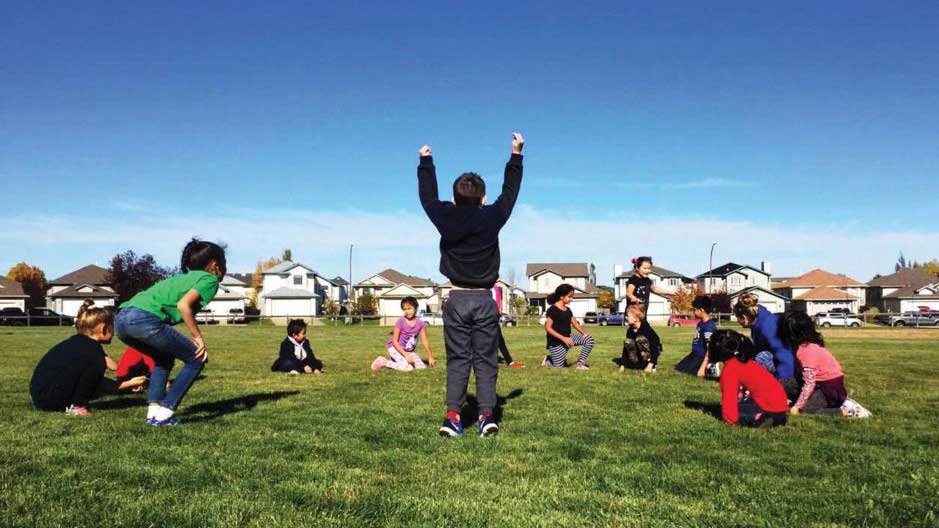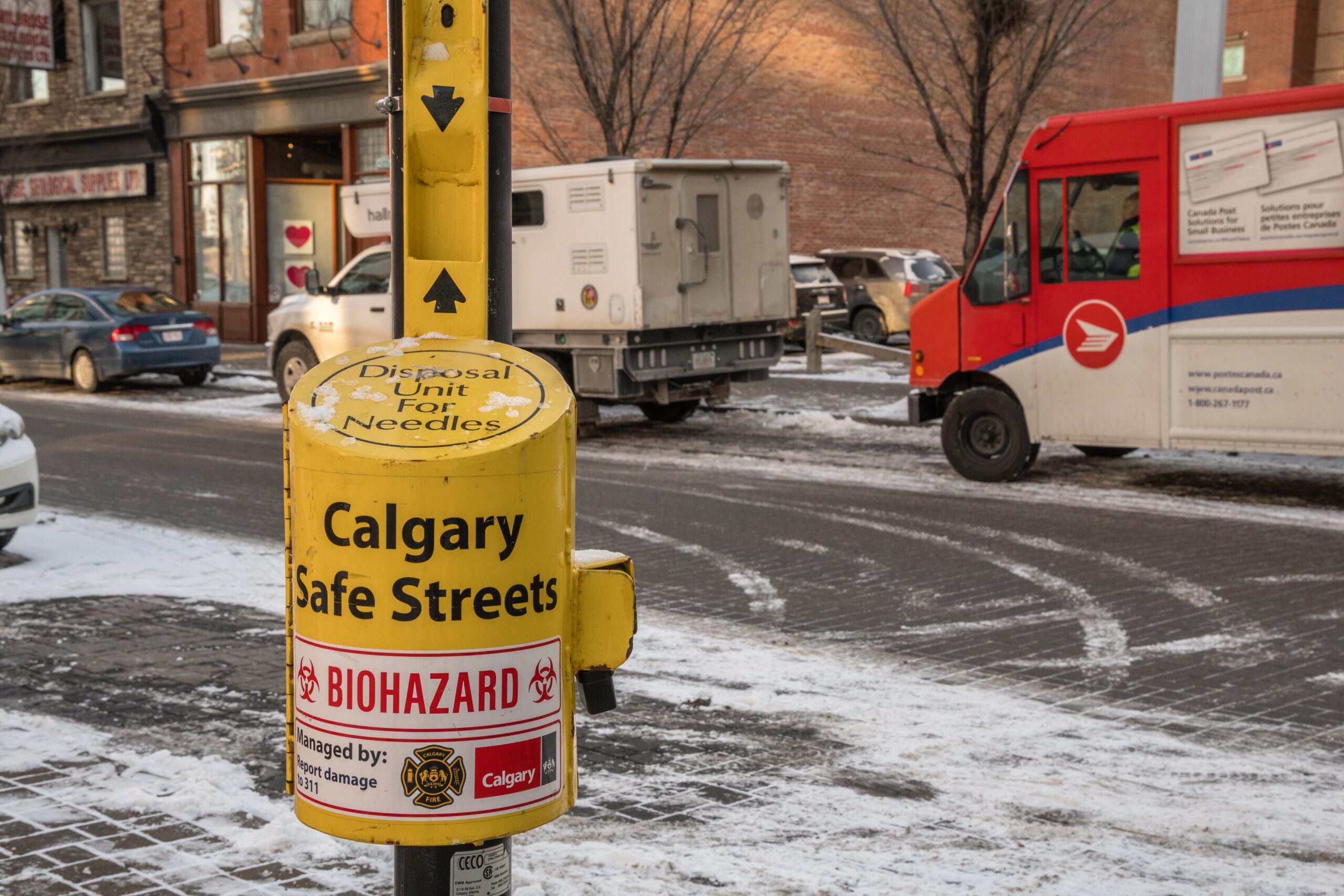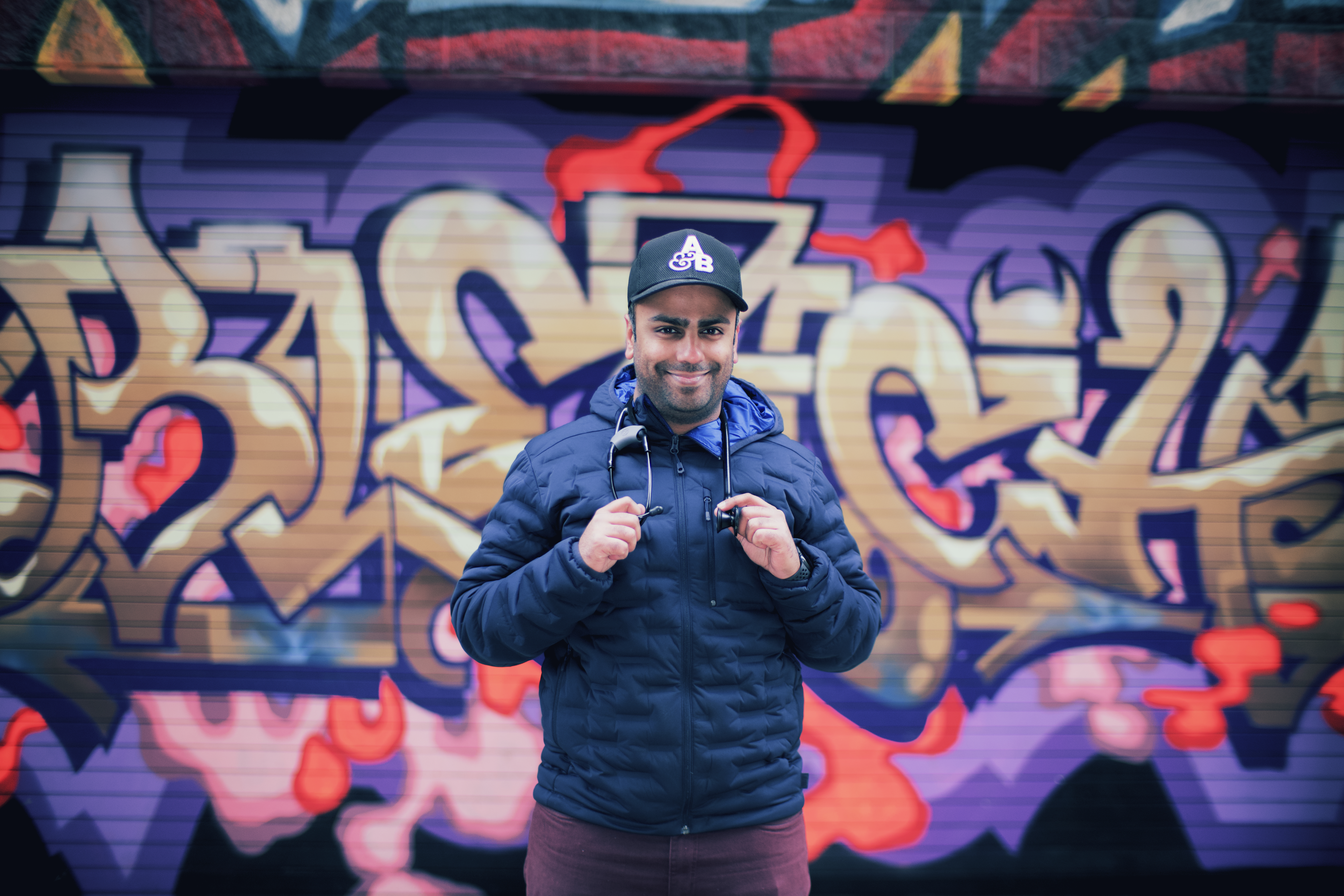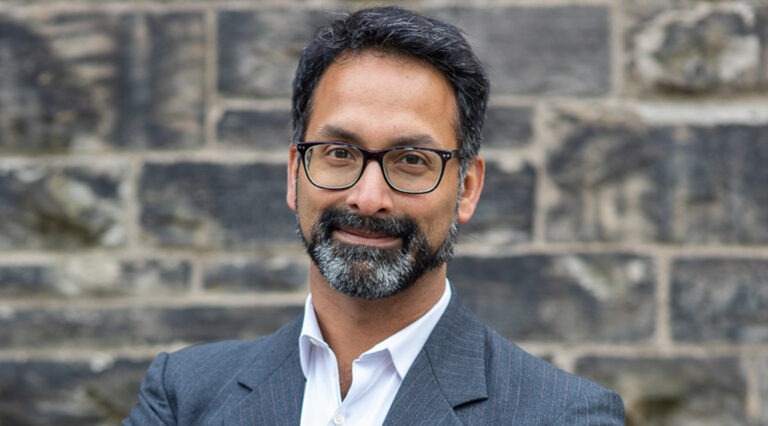Dr. Tara Kiran joined The Globe and Mail webcast panel – Election 2025: Steps to heal Canada’s health care system – to discuss the current landscape and possible solutions with other healthcare leaders. You can now read the highlights from their conversation.
Author: Samira Prasad
APPLE Schools and Ophea Join Forces for Healthier School Communities
Big things are coming! APPLE Schools and Ophea are all about fostering healthy, vibrant school communities where students can thrive. That’s why we’re thrilled to announce an exciting collaboration between our two organizations that will take our efforts to the next level!
This fall, APPLE Schools will work with six schools in the Durham District School Board to deliver health education centred on nutritious eating, physical activity, and mental wellness through a comprehensive health lens. Leveraging Ophea’s extensive network, strong relationships, and specialized expertise in the region for success, the Apple approach involves working closely with schools to create tailored action plans, providing mentorship, and equipping them with funds and resources to prioritize student and teacher well-being.
“By aligning APPLE Schools’ research-backed approach to school health with Ophea’s century-long legacy in the region, our partnership signifies a meaningful collaboration. We are excited to work with Ophea on innovative programming and create healthier futures for students in Ontario and across Canada.”
Jenn Flynn, Executive Director at APPLE Schools
APPLE Schools has been dedicated to promoting health and wellness in school communities since starting in 10 Alberta schools in 2007. Recognized internationally as a top 100 innovative global education project, it now actively supports over 33,000 students annually in over 100 schools in Alberta, BC, Manitoba, the Northwest Territories and now, Ontario! APPLE Schools focuses on empowering students to make informed choices about their health, whether it’s through encouraging healthy eating, promoting physical activity, or supporting mental well-being.
Ophea has been a driving force for health and learning in Ontario schools since 1921. Through quality programs, advocacy, and partnerships, Ophea works tirelessly to enhance the health and well-being of children and youth across the province. From providing curriculum support to setting safety standards for physical activity, Ophea is at the forefront of creating and recognizing healthier school environments.
“Ophea and APPLE Schools are proud to partner in Durham District School Board, embodying the spirit of collaboration to champion healthier school communities. Together we’re able to amplify our impact and that will only benefit the students and staff!”
Chris Markham, Executive Director and CEO at Ophea
When asked about what they were most looking forward to as a result of this opportunity to work in partnership with Apple Schools and Ophea, Tanya Urbancic-Venemore, K-12 Facilitator for the Arts and Health & Physical Education within the Student Achievement and Curriculum Department with Durham District School Board shared:
“The chance to integrate comprehensive health and wellness programs across 6 of our schools is incredibly exciting. This partnership will allow us to implement evidence-based strategies that promote physical activity, healthy eating, and mental well-being. Additionally, I am enthusiastic about the professional development opportunities for our educators, which will empower them to create healthier, more supportive environments for our students.”
APPLE Schools extends its gratitude to the St. Michael’s Foundation and Even the Odds, a philanthropic arm of Staples Canada, for providing the financial support to make this exciting new collaboration possible.
Stay tuned for more updates and announcements as we embark on this exciting journey together this fall!
Winnipeg hospital unveils vending machine to help with harm reduction
MAP’s latest Healthbox launch at Winnipeg’s St. Boniface Hospital is the first acute-care hospital in Canada to have a health supplies vending machine to help save lives.
“This is something that works. It’s going to help the community here,” shared Dr. Sean Rourke, project lead. “It’s going to reach people, it’s going to help people get what they need to take care of themselves and their health.
Staples Canada and MAP join forces to address chronic homelessness in Canada through Even the Odds Campaign
Funds raised through Even the Odds support life-changing research and programs to help create a more equitable future in communities across the country
RICHMOND HILL, ON, April 14, 2025 /CNW/ – Staples Canada and MAP, Canada’s largest health equity research centre, are tackling chronic homelessness in Canada. By supporting MAP’s innovative research and evidence-based programs, Staples’ Even the Odds program is raising funds that help people to get housed, stay housed, and regain their health and wellbeing.
“Even the Odds is about creating pathways to opportunity, and we recognize that stable housing is fundamental to education, employment, and overall well-being,” said Rachel Huckle, CEO, Staples Canada. “The proven success of MAP’s research gives us confidence that our support is making a tangible, lasting difference in communities across Canada.”
Until May 11, customers can donate to Even the Odds and fund this life-changing research at any one of Staples’ 298 stores or online at Staples.ca/EvenTheOdds. All donations will be matched by the company up to $500,000.
For more than 25 years, MAP has been a leader in solutions-focused research to find the best ways to improve health and housing outcomes for people who are unhoused, including co-leading the largest research trial in Canadian history to evaluate solutions to end homelessness. MAP is based at St. Michael’s Hospital in Toronto.
“Our studies show that people experiencing chronic homelessness don’t just need housing—they need ongoing, individualized support in order to thrive and make positive changes in their lives,” said Dr. Stephen Hwang, Director of MAP and the Canada Research Chair in Homelessness, Housing and Health. “I’m proud to say that MAP is among the organizations leading the world in this research, and the success of our Even the Odds programs demonstrates the power of investment in evidence-based interventions. Thanks to Staples Canada’s commitment, we can continue scaling to reach unhoused individuals across the country.”
Donations raised through Even the Odds will help fund several critical MAP programs, including MAP’s signature Navigator Program. The program pairs hospital patients who are homeless with an outreach counsellor—a “Navigator.” The Navigator gets to know the patient and connects them with the health and social support they need to break cycles of homelessness and poor health, and to move forward in securing housing that works for them.
With support from Even the Odds, MAP has expanded the Navigator program from St. Michael’s Hospital in Toronto to St. Paul’s Hospital in Vancouver. To date, the innovative program has provided outreach support to more than a thousand people experiencing homelessness in Toronto and Vancouver, and will launch at CHUM (Centre hospitalier de l’Université de Montréal) in Montréal later this year.
Expanding Equity-Building Initiatives
Since the launch of Even the Odds in 2021, Staples has raised more than $7 million in support of MAP. In addition to the Navigator program, this funding has expanded MAP’s work throughout Canada to help end childhood health inequities, and to break down barriers to care and disease prevention. These equity-building initiatives include:
- APPLE Schools, an award-winning health promotion initiative to support a healthy start for children in underserved communities.
- OurCare, the largest cross-Canada conversation about the future of primary care and how to create a stronger, more equitable system.
- Healthbox, ‘smart’ vending machines that dispense free health supplies and essentials such as warm socks and hygiene products to people experiencing major barriers to healthcare.
- Healthy Food Prescription, a landmark research trial to test a promising approach to food insecurity and chronic disease inequities: grocery store vouchers prescribed by physicians to low-income patients with diabetes.
Staples Even the Odds Campaign, in support of MAP, continues to drive lasting solutions to homelessness by funding innovative research and programs. Through collaboration and donor support, it is helping people overcome barriers, secure stable housing and build healthier, more equitable futures for communities across Canada. To learn more about the Even the Odds program, visit staples.ca/eventheodds.
About MAP
MAP is Canada’s largest research centre focused on health equity and the social determinants of health. Internationally recognized for groundbreaking science and innovation, MAP develops and implements real-world, evidence-driven program and policy solutions that disrupt cycles of socioeconomic exclusion and poor health. For more than 25 years, MAP has partnered with communities and policy makers across the country to take on complex issues such as homelessness, intimate partner violence, inequitable access to healthcare and the prevention of opioid-related harms. MAP’s impacts span from local to national and beyond. MAP’s vision is a healthier future for all. MAP is based at St. Michael’s Hospital, a fully affiliated University of Toronto teaching and research-intensive hospital and hub for care in downtown Toronto. St. Michael’s Hospital is a site of Unity Health Toronto, a hospital network serving patients, residents and clients across the full spectrum of care. Learn more at maphealth.ca
About Staples Canada
Staples Canada is The Working and Learning Company. We are a Canadian company committed to helping parents, teachers, businesses, and entrepreneurs work smarter, learn more and grow every day. Our network includes 298 stores across Canada and staples.ca, printing and shipping services at Staples Print, and Staples Studio co-working spaces. To service the unique needs of businesses, we also have a number of dedicated B2B brands that support business customers of all sizes, which include Staples Preferred, Staples Professional, Supreme Office Supplies and Furniture, Denis Office Supplies, Monarch Office Supply Inc. and Beatties. Headquartered in Richmond Hill, Ontario, we are committed to the communities we serve across Canada, and are a proud partner of MAP through our Even The Odds fundraising and awareness initiative that aims to eliminate critical gaps in health equity. Visit staples.ca for more information or engage with @StaplesCanada on Facebook, Twitter, Instagram, LinkedIn, or TikTok.
Media information: Staples Canada: Kristen Scollard, 416-818-7701, kristen.scollard@staples.ca; Golin, for Staples Canada: Meg Murphy, 647-475-4495, mmurphy@golin.com
Staples/Bureau en Gros et le Centre MAP unissent leurs forces pour lutter contre l’itinérance chronique au Canada par le biais de la campagne À chance égale
Les fonds recueillis par le biais de la campagne À chance égale soutiennent la recherche et les programmes qui changent la vie afin de créer un avenir plus équitable dans les collectivités partout au pays
RICHMOND HILL, ON, le 14 avril 2025 /CNW/ – Staples/Bureau en Gros et le Centre MAP, le plus grand centre de recherche à l’échelle nationale sur l’équité en matière de santé, s’attaquent à l’itinérance chronique au pays. En soutenant la recherche novatrice du Centre MAP et les programmes fondés sur des données probantes, le programme À chance égale de Staples/Bureau en Gros recueille des fonds pour aider les personnes à se loger, à rester logées et à retrouver leur santé et leur bien-être.
« À chance égale, c’est créer des voies vers des occasions, et nous reconnaissons qu’un logement stable est essentiel à l’éducation, à l’emploi et au bien-être général », a déclaré Rachel Huckle, PDG de Staples/Bureau en Gros. « Le succès éprouvé de la recherche du Centre MAP nous donne confiance que notre soutien fait une différence concrète et durable au sein des collectivités partout au Canada. »
Jusqu’au 11 mai, les clients pourront faire un don au profit de la campagne À chance égale et financer cette recherche qui change des vies dans l’un des 298 magasins de Staples/Bureau en Gros ou en ligne à bureauengros.com/achanceegale. Tous les dons seront égalés par l’entreprise jusqu’à concurrence de 500 000 $.
Depuis plus de 25 ans, le Centre MAP est un chef de file en matière de recherche axée sur les solutions pour trouver les meilleures façons d’améliorer les résultats en matière de santé et de logement pour les personnes en situation d’itinérance; le Centre MAP dirige conjointement la plus grande étude de recherche de l’histoire du pays afin de trouver des solutions pour mettre fin à l’itinérance. Le Centre MAP est situé à l’hôpital St. Michael, à Toronto.
« Nos études montrent que les personnes en situation d’itinérance chronique n’ont pas seulement besoin de logement — elles ont besoin d’un soutien continu et personnalisé pour s’épanouir et apporter des changements positifs dans leur vie », a déclaré le Dr Stephen Hwang, directeur du Centre MAP et titulaire de la Chaire de recherche du Canada sur l’itinérance, le logement et la santé. « Je suis fier de dire que le Centre MAP fait partie des organisations de premier plan à l’échelle mondiale dans cette recherche, et que le succès de nos programmes À chance égale démontre le pouvoir d’investir dans des interventions fondées sur des données probantes. Grâce à l’engagement de Staples/Bureau en Gros, nous pouvons continuer à nous adapter pour atteindre des personnes en situation d’itinérance dans tout le pays. »
Les dons recueillis dans le cadre de la campagne À chance égale contribueront à financer plusieurs programmes essentiels du Centre MAP, y compris le programme Navigator, emblématique du Centre MAP. Ce programme associe les patients en milieu hospitalier qui sont en situation d’itinérance à un conseiller en matière de sensibilisation — un « navigateur ». Le navigateur apprend à connaître le patient et le met en contact avec le soutien social et de santé dont il a besoin pour briser les cycles d’itinérance et de mauvaise santé, et l’aide à aller de l’avant dans l’obtention d’un logement qui lui convient.
Grâce à la campagne À chance égale, le Centre MAP a pu mettre en œuvre le programme Navigator de l’hôpital St. Michael de Toronto à l’hôpital St. Paul de Vancouver. À ce jour, ce programme novateur a fourni un soutien en matière de sensibilisation à plus d’un millier de personnes en situation d’itinérance à Toronto et à Vancouver, et sera lancé au CHUM (Centre hospitalier de l’Université de Montréal) à Montréal plus tard cette année.
Élargir les initiatives de renforcement de l’équité
Depuis le lancement de la campagne À chance égale en 2021, Staples/Bureau en Gros a amassé plus de 7 millions de dollars pour soutenir le Centre MAP. En plus du programme Navigator, ce financement a permis de mettre en œuvre le travail du Centre MAP partout au Canada pour aider à mettre fin aux inégalités en matière de santé chez les enfants et à éliminer les obstacles aux soins et à la prévention des maladies. Ces initiatives de renforcement de l’équité comprennent ce qui suit :
- APPLE Schools, une initiative primée de promotion de la santé visant à soutenir un départ sain pour les enfants des collectivités scolaires défavorisées.
- NosSoins, la plus grande conversation pancanadienne sur l’avenir des soins primaires et la façon de créer un système plus solide et plus équitable.
- Boîtesanté, distributeurs automatiques « intelligents » qui dispensent gratuitement des produits de santé et des articles essentiels comme des chaussettes chaudes et des produits d’hygiène aux personnes qui connaissent des obstacles majeurs aux soins de santé.
- Prescription d’aliments sains, un essai de recherche phare visant à mettre à l’essai une approche prometteuse pour réduire l’insécurité alimentaire et les inégalités liées aux maladies chroniques : des bons d’achat d’épicerie prescrits par les médecins aux patients atteints de diabète et à faible revenu.
La campagne À chance égale de Staples/Bureau en Gros, en soutien au Centre MAP, continue de proposer des solutions durables pour lutter contre l’itinérance en finançant des recherches et des programmes novateurs. Grâce à la collaboration et au soutien des donateurs, le programme aide les gens à surmonter les obstacles, à obtenir un logement stable et à bâtir un avenir plus sain et plus équitable pour les collectivités du Canada. Pour en savoir plus sur la campagne À chance égale, visitez le site Web bureauengros.com/a/contenu/a-chance-egale.
À propos du Centre MAP
Le Centre MAP est le plus grand centre de recherche au Canada axé sur l’équité en matière de santé et les déterminants sociaux de la santé. Reconnu à l’échelle internationale pour sa science et son innovation révolutionnaires, le Centre MAP élabore et met en œuvre des programmes et des politiques concrets fondés sur des données probantes qui rompent les cycles d’exclusion socioéconomique et de mauvaise santé. Depuis plus de 25 ans, le Centre MAP travaille en partenariat avec des collectivités et des décideurs politiques partout au pays pour aborder des questions complexes telles que l’itinérance, la violence conjugale, l’accès inéquitable aux soins de santé et la prévention des effets nocifs liés aux opioïdes. Les répercussions du Centre MAP s’étendent de l’échelle locale à l’échelle nationale et au-delà. La vision du Centre MAP est un avenir plus sain pour tous. Le Centre MAP est basé à l’hôpital St. Michael, un centre hospitalier universitaire entièrement affilié à l’Université de Toronto et un centre de soins dans le centre-ville de Toronto. L’hôpital St. Michael est un site d’Unity Health Toronto, un réseau hospitalier dévoué au service des patients, des résidents et des clients dans toute la gamme des soins. Apprenez-en plus sur le site Web maphealth.ca.
À propos de Staples/Bureau en Gros
Staples/Bureau en Gros est l’Entreprise du travail et de l’apprentissage. Nous sommes une entreprise canadienne dévouée à aider les parents, les enseignants, les entreprises et les entrepreneurs à travailler plus intelligemment, à apprendre davantage et à évoluer chaque jour. Notre réseau comprend 298 magasins au pays ainsi que le site Web bureauengros.com, les services d’impression et d’expédition d’Impression Bureau en Gros et les espaces de travail partagés de Staples Studio. Pour répondre aux besoins uniques des entreprises, nous proposons également plusieurs bannières interentreprises dédiées à soutenir les clients commerciaux de toutes tailles, dont Bureau en Gros Privilège, Staples Professionnel, Supreme Office Supplies and Furniture, Fournitures de bureau Denis, Monarch Office Supply inc. et Beatties. Nous sommes basés à Richmond Hill, en Ontario, et nous sommes engagés envers les collectivités que nous desservons partout au pays en plus d’être un fier partenaire du Centre MAP par l’entremise de notre initiative de collecte de fonds et de sensibilisation À chance égale, qui vise à éliminer les lacunes critiques en matière d’accès équitable aux soins de santé. Visitez bureauengros.com pour en savoir plus ou suivez-nous à @BureauEnGros et @StaplesCanada sur Facebook, Twitter, Instagram, LinkedIn ou TikTok.
Renseignements pour les médias : Staples/Bureau en Gros : Kristen Scollard, 416 818-7701, kristen.scollard@staples.ca ; Golin, pour Staples/Bureau en Gros : Meg Murphy, 647 475-4495, mmurphy@golin.com
Ontario aims to get 300,000 patients off doctor wait-list with new clinics
Dr. Tara Kiran spoke with the Toronto Star about the province’s latest initiative to get Ontarians off of family doctor waiting lists. “We absolutely need more people to have access to primary care, and I think this proposal is trying to do it both fast and fairly,” she shared.
There are daily pills to prevent HIV — but injectable options could change what prevention looks like
Dr. Darrel Tan spoke to the CBC about injectable antiviral medication for prevention and treatment of HIV. “Not everyone has the ability for all kinds of personal, circumstantial, structural reasons to adhere to a daily pill-taking regime,” he shared. “So this is a major advance and really something that meets an existing need.”
Is Canada’s ‘fentanyl czar’ just about diplomacy – or could he actually help address the overdose crisis?
Dr. Mohammad Karamouzian wrote this op-ed for The Globe and Mail on Canada’s new initiatives to curb the opioid crisis with stricter border control.
Palliative care for people experiencing homelessness: Naheed Dosani
Dr. Naheed Dosani, MAP investigator, palliative care physician at St. Michael’s Hospital, and health justice activist shares his career journey with the GeriPal Podcast. Just out of fellowship, Dr. Dosani built a palliative care program for homeless persons called the Palliative Education and Care for the Homeless (PEACH) Program. He discusses the principles of harm reduction and trauma informed care.
Primary care lessons: What the Netherlands can teach us
Dr. Tara Kiran recently visited the Netherlands, a world leader in health, to see what we can take away from their primary-care system. What she found is a system that provides around-the-clock care and primary care teams who can see patients when they need it most. She shares her findings with Dr. Brian Goldman in this episode of CBC’s White Coat Black Art
Should you consult ‘Dr. ChatGPT’? Here’s what doctors have to say as Canadians increasingly turn to AI
Dr. Andrew Pinto spoke with the Toronto Star about patient use of AI chat bots for medical inquiries. “My experience is these tools help patients find out more about symptoms and specific conditions, but can’t consider context,” he shared.











